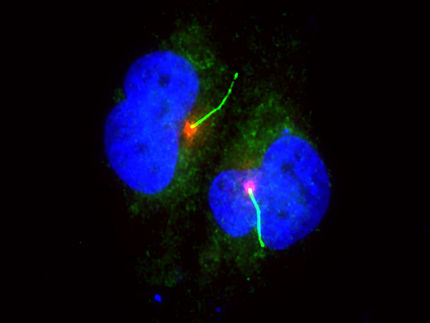'Co-conspirator' cells could hold key to melanoma prediction, prevention
Advertisement
New research on how skin cancer begins has identified adjacent cancer cells that scientists are calling "co-conspirators" in the genesis of melanoma, in findings that could someday hold the key to predicting, preventing and stopping this hard-to-treat cancer before it spreads. Changes in the body's pigment-producing cells, where melanoma takes hold are only part of the story, according to a new study by researchers from Oregon State University. Other skin cells in what's called the "microenvironment" of the cancer site also play a key role, scientists say.
"These adjacent cells, which are called keratinocytes, are actually the driver for the changes and malignant transformation in the pigment-producing cells, which are called melanocytes," said Arup Indra, an assistant professor in the OSU College of Pharmacy.
"So there are two avenues - the pigment-producing cells where the cancer develops, and the adjacent skin cells which 'talk to' the pigment-producing cells in the form of signals," Indra said. "They work in coordination, they are partners in crime."
Research was done with both animal models and human samples, from individuals who carry a mutation in a gene called Cdk4, which is an inherited predisposition to melanoma that has turned up in families in Norway, France, Australia and England The study found that a protein called RXR-alpha in skin keratinocytes appears to protect pigment cells from damage, and prevent them from progressing to invasive melanoma.
This protein in skin cells sends chemical signals to the adjacent pigment cells, Indra said. The study revealed that these signals can, in effect, prevent or block the abnormal proliferation of pigment-producing cells in laboratory mice. Conversely, when the protein was removed or repressed, melanoma cells became aggressive and invaded the animals' lymph nodes.
However, both the protective protein and pigment cells can suffer damage from chemical toxins or ultraviolet sunlight in the pigment cells, creating a "double-edged sword" in melanoma's complex etiology, according to Indra.
To study melanoma cells in isolation from their surrounding biochemical and molecular environment is to miss the intricate series of related interactions that give rise to the disease, he said. The finding could lead to promising new prevention tools down the road, Indra said.
"Better understanding this process will help us design new and novel strategies for prevention and, possibly, a cure," Indra said. "This could be a predictive prognostic tool for discovering melanoma predisposition in humans. And that could lead to better and earlier diagnostics."
























































